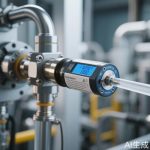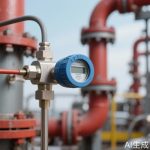In an era where precision and accuracy are paramount, high-sensitivity pressure sensors have emerged as unsung heroes in the technological landscape. These advanced devices are capable of detecting minute changes in pressure with remarkable accuracy, making them indispensable across a wide range of industries. From healthcare to automotive engineering, the applications are as diverse as they are transformative.
What sets high-sensitivity pressure sensors apart is their ability to measure pressure variations that were once considered undetectable. Utilizing cutting-edge materials such as piezoresistive or capacitive elements, these sensors convert physical pressure into electrical signals with exceptional fidelity. This allows for real-time monitoring and data collection that is critical for systems requiring utmost precision.
In the medical field, high-sensitivity pressure sensors are revolutionizing patient care. They are integral to devices like ventilators, blood pressure monitors, and even implantable medical devices. For instance, in minimally invasive surgeries, these sensors provide surgeons with real-time feedback on internal pressures, enhancing both safety and outcomes. The ability to monitor subtle physiological changes can be life-saving, offering new avenues for diagnostics and treatment.
The automotive industry is another sector reaping the benefits. Modern vehicles rely on these sensors for everything from tire pressure monitoring systems (TPMS) to advanced driver-assistance systems (ADAS). By ensuring optimal tire pressure, they contribute to fuel efficiency and safety. In autonomous vehicles, high-sensitivity sensors help in navigating complex environments by detecting minute changes in atmospheric pressure, aiding in altitude and weather adaptation.
Industrial automation has also been transformed. In manufacturing processes, these sensors ensure quality control by monitoring pressure in hydraulic systems, pneumatic controls, and even robotic arms. This not only improves efficiency but also reduces downtime by predicting maintenance needs before failures occur. The data harvested enables smarter, more responsive operations aligned with Industry 4.0 standards.
Consumer electronics are not left behind. From smartphones that use barometric pressure sensors for altitude tracking to wearable health devices that monitor environmental conditions, the integration of high-sensitivity pressure sensors enhances user experience and functionality. Their miniaturization without compromising performance is a testament to advancements in microelectromechanical systems (MEMS) technology.
Looking ahead, the future of high-sensitivity pressure sensors is incredibly promising. Innovations in nanomaterials and IoT connectivity are paving the way for even smaller, more efficient, and smarter sensors. These developments will likely expand their applications into emerging fields such as environmental monitoring, aerospace, and smart agriculture, where precise pressure data can drive sustainability and efficiency.
In conclusion, high-sensitivity pressure sensors are at the heart of modern technological advancements, providing the precision necessary for innovation across multiple domains. As they continue to evolve, their impact will only grow, embedding deeper into the fabric of our daily lives and the technologies that shape our future.




Leave a Message